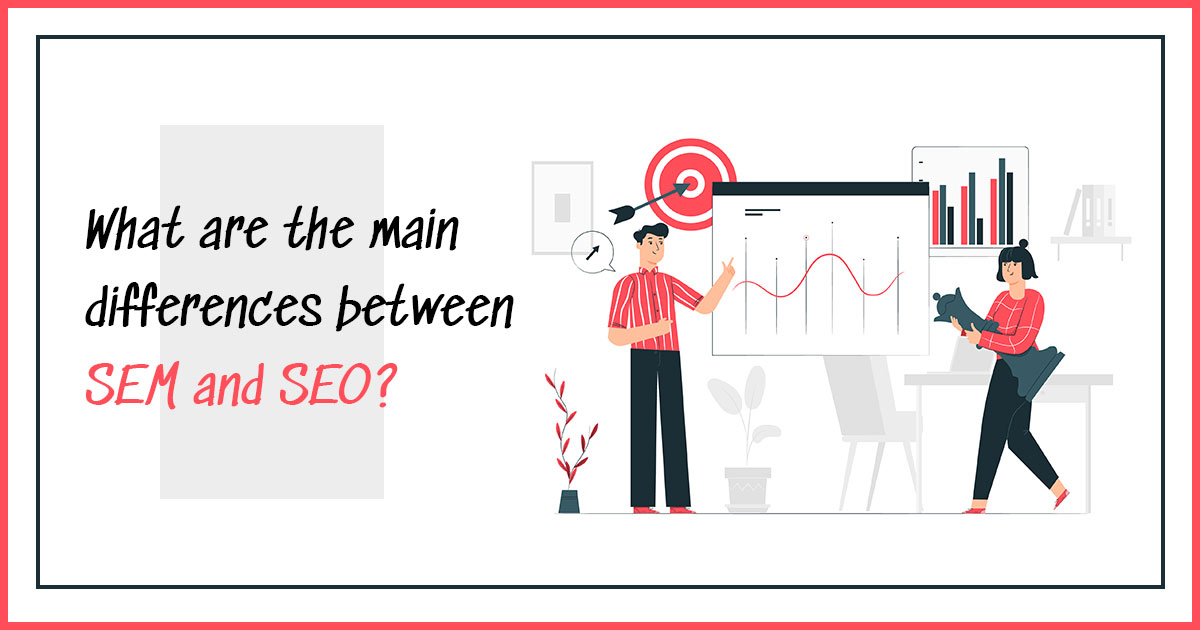It is often difficult to distinguish between SEO “search engine optimization” and SEM “Search Engine Marketing”. Often, many people want to know what the difference is. SEO and SEM are often confused concepts.
Both processes are aimed at increasing search engine ranking visibility. The difference between SEO and SEM is easy to grasp. Join us to learn the difference between SEO & SEM.
What’s SEO?
SEO stands for Search Engine Optimization. SEO is the process of optimizing your website in order to increase its visibility on Search Engine Results Pages (SERP) to gain free traffic.
Read our blog on SEO 2022: Best Practice and tips.
A website that is optimized is easier to understand by the search engine’s crawlers. This enhances your likelihood of being ranked higher. SEO is a free, unpaid form of SEM. It aims to attract organic traffic. SEO is more patience-intensive than SEM, but can produce better quality and longer-lasting results.
The value of organic search is high. An analysis of online searches in 2021 revealed that over 6 billion searches were performed daily. It is now well-known that search engines are used by people all over the globe to solve problems, answer questions and learn how to do things or purchase something online.
Search engines can bring in huge amounts of traffic to websites, which can lead to opportunities and sales. SEO is a valuable component of online marketing.
Users who are conditioned to ignore advertisements will choose to discard Google Ads and focus on the top organic results. SEO is more time-consuming than PPC marketing.
However, once you establish search credibility it can be highly sustainable. SEO allows you to tweak your efforts over time without having to pay for clicks or impressions.
Off-site and On-site SEO
On-site and offline SEO are the two main pillars to successful SEO. To ensure your website or blog is search engine friendly, you can easily apply on-site SEO. This includes the clever integration of keywords and secondary keywords, optimizing titles, meta descriptions as well as correctly using H1s,H2s, images, and other techniques.
It is important to know what audience you are targeting and how you plan to reach them. Google has made Panda, Penguin, and Hummingbird SEO and SERP search results more focused on quality and value.
The search engine crawlers read content in a similar way to humans, so keyword stuffing is no longer an effective strategy. Black hat SEO techniques can cause a drop in your rank.
Off-site SEO is the process of obtaining backlinks from other websites in order to increase trust for your website with search engines. Backlink curating can be a difficult task. It’s not just about how many links are coming to your site, but also the source of those linked.
If you have many links, but they are not from trusted sources, you may also experience a decline in your ranking. With many old-school black hat SEO tricks, there would be a lot of untrusted, directory, or zombie farm websites that create backlinks to websites. Modern SEO does not allow these backlinks and they can be harmful to your site.
What’s SEM?
SEM stands for search engine marketing. SEM shares some similarities with SEO. It allows you to direct relevant traffic to your website from search engines.
This can be done by purchasing sponsored or paid ad listings. Although there are many search engines that do this, such as Yahoo or Bing, the most popular one is Google via Google Ads.
SEM allows advertisers to gain visibility in search engines. It drives the right type of traffic to your site without waiting for an SEO campaign. For the greatest return on your investment, you need a dynamic and strong SEM strategy.
SEM’s objective is to improve visibility in search engines by purchasing advertising space in search engine results in a bidding auction. It is usually located at the top of the SERP – Search Engine Results Page.
This is a form of advertising that focuses on attention and allows you to quickly reach the top of the SERP by outbidding your competitors.
SEO and SEM are both used to increase awareness about a brand. SEO can help you dominate organic results and increase brand credibility. SEM may provide immediate results, but SEO will take you to the top of SERP.
SEM Marketing
SEM traffic is one of the best sources of internet traffic. This marketing process includes methods such as PPC advertising, also known as pay-per-click. SEM offers more control and immediate results than SEO.
You can adjust and test every detail of your advertisement to ensure that you have control over every aspect of the message. This allows you to be more persuasive and promotional than SEO.
Each part of an SEM ad can be customized to get the best click through rate. This allows you to better showcase your product or service. PPC advertising may also include visual advertising and shopping aids. This can increase brand visibility as compared to organic listings which only include plain text.
Advertising Analytics and SEM
One of the best things about PPC and SEM campaigns is their ability to quickly analyse results and fix conversion-related issues. You can get instant feedback without any extra work, which is not possible with SEO.
Additionally, SEO updates can make it very volatile. Website positions in search engine results can be affected by these frequent updates. SEM offers more stability because GoogleAds is dependent on market competition and is bidding against other advertisers. PPC can deliver quick results, which is not possible with SEO.
Even though a PPC campaign is only for a few weeks, it shouldn’t surprise that you can see significant results. This makes SEM and PPC ideal for new products, and allows split testing to improve ROI. You can adjust your ad performance as necessary to increase return by receiving the critical data.Visit BSO Digital to learn more about SEO and SEM marketing


